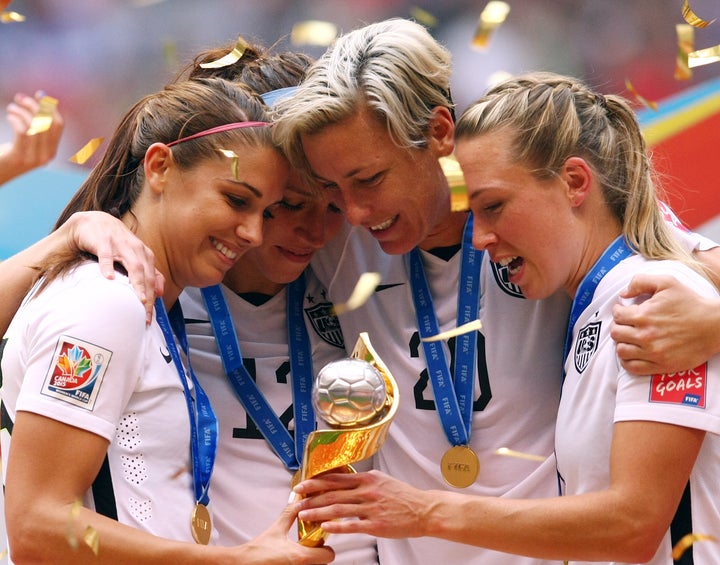
Fret not, soccer fans. The 2018 World Cup in Russia is over, but we don’t have to wait four more years for top-tier international football to return. Less than a year from now, the 2019 Women’s World Cup will kick off in France, where Les Bleues will have their chance to follow in the footsteps of France’s men’s team by winning soccer’s biggest trophy.
In the meantime, there’s plenty of soccer to fill the void in your soul. The European club season kicks off in August; in the United States, both Major League Soccer and the National Women’s Soccer League are already in the middle of their seasons. And the women’s U-17 and U-20 World Cups will take place this fall, with the United States a solid favorite to compete for both titles.
The Americans figure to enter the 2019 Women’s World Cup as a favorite, too, to bring their fourth World Cup title home, four years after the U.S. women’s team demolished Japan in the 2015 final behind a glorious hat trick from Carli Lloyd. Remember this?
To do so, though, the U.S. team will have to navigate what will almost certainly amount to the deepest, most talented and best-balanced field of teams ever assembled for an international women’s tournament.
So here’s an early preview of the 2019 Women’s World Cup, which begins June 7 in Paris, including a preliminary look at the best teams and players that figure to take the field in France next summer.
The Favorites
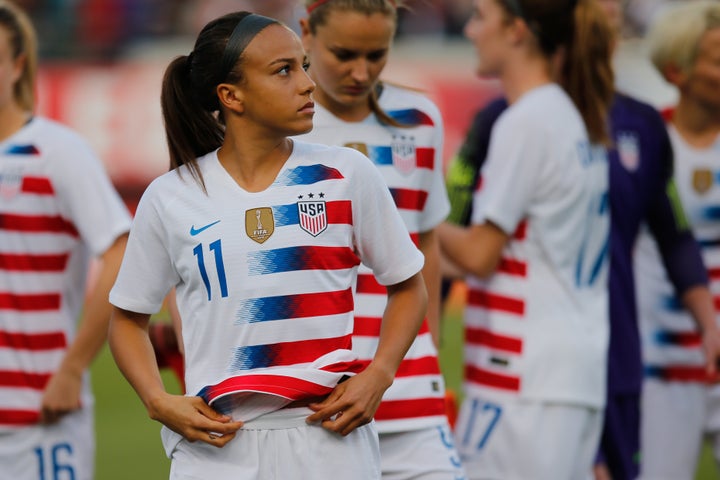
The names at the top of FIFA’s women’s rankings are familiar: The United States, Germany, France, England, Canada, Japan and Brazil make up the top seven. Those teams all figure to have a shot in France next summer, though the top three are for now probably slightly ahead of the next four.
The United States: The defending champion and FIFA’s top-ranked team will no doubt head into France with the belief that any result short of its fourth World Cup title will amount to failure. The team entered the 2015 World Cup facing tons of questions (and plenty of skepticism) about manager Jill Ellis’ tactics and lineup choices, then figured it out and won the whole thing anyway. That, I suppose, should make everyone feel a bit better about the fact that Ellis is once again facing similar skepticism, as the Americans haven’t exactly dominated competitions since then. But there’s still a metric ton of talent here, including 20-year-old Mallory Pugh, who is one of the game’s most entertaining players when she’s healthy. Crystal Dunn will have something to prove after missing out in 2015. Add longtime stalwarts like Alex Morgan, Megan Rapinoe, Tobin Heath and Christen Press, and the U.S. figures to boast the tournament’s most dynamic attack, if Ellis can figure out how to deploy them correctly. Two other major questions Ellis has to answer: How to replace legendary keeper Hope Solo, who hasn’t played for the national team since 2016, and how (or whether) to utilize Lloyd, who will turn 37 two days after the 2019 final and has insisted that she plans to play in France.
Germany: The Germans fell to the U.S. in the semifinals in 2015 — a disappointing result for a team that thought it had finally shattered American supremacy in the women’s game. Germany bounced back to win a gold medal at the 2016 Rio Olympics but then crashed out of the 2017 Euros in the quarterfinals. (Germany had won the tournament six straight times before that.) Then Germany struggled at the 2018 SheBelieves Cup, losing to France and the U.S. and managing only a draw against England. So what to make of the Germans? Who knows, for now? But Germany boasts so much talent that it’s always capable of putting it together and winning a third World Cup title.
France: Les Bleues are still looking for their first major international trophy. France’s best World Cup finish was fourth in 2011, and it has never gone past the quarters of the European championship. The French Football Federation, however, has spent the last decade developing the women’s game at its acclaimed Clairefontaine academy and through its domestic women’s league, and it’s hard not to consider France a favorite at home. Louisa Nécib ― one of France’s most accomplished players ― retired from international play after the team’s dramatic loss in penalty kicks to Germany in Montreal three years ago, but stars Eugénie Le Sommer and Amandine Henry should be back for one more shot at winning France’s first World Cup.
The Challengers
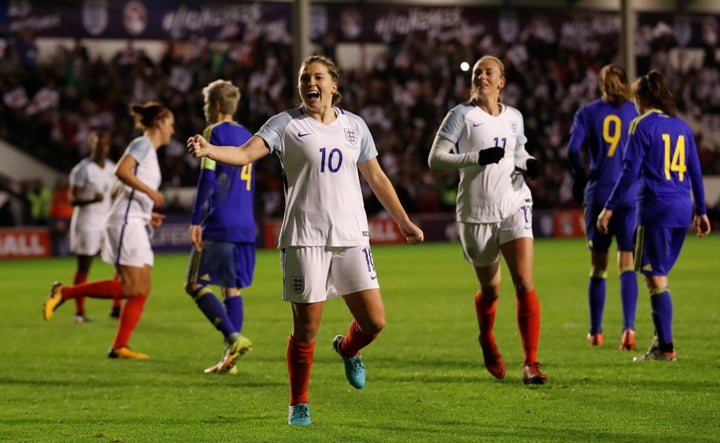
Japan: One of the most consistent women’s sides in the world over the last decade, Japan won the World Cup in 2011 and lost in the final three years ago. Japan figures to be among the contenders again and may warrant a place among the favorites. But it has been passed in FIFA’s rankings by three teams, including France, that are trying to take Japan’s place in the global hierarchy, and Japan spent much of 2017 and 2018 ranked behind another side that’s still looking for its first World Cup title.
England: There are good arguments that the Three Lionesses belong in the top tier of contenders, especially given their results against those three teams over the last two years. England went out of the 2015 tournament on a devastating last-minute own goal in the semifinals but rebounded to beat Germany and finish third. England is now ranked fourth — a result of the English Football Association’s pouring more resources into the women’s game over the last decade at the club and international levels. The Women’s Super League is one of the world’s most established women’s leagues, and the vast majority of England’s team now plays there. That has made it easier to replace stalwarts like Alex Scott and Casey Stoney ― both now retired ― with young talent capable of pushing England to the next level. One to watch: 25-year-old midfielder Fran Kirby, the reigning English player of the year, who scored at the 2015 World Cup before missing the quarters and semis to injury.
Canada: The team that has lived in the shadow of its more powerful neighbor suffered its own heartbreaking defeat at home in the 2015 quarterfinals but now figures to take perhaps its most talented roster ever to France. Captain Christine Sinclair, Canada’s all-time leading scorer (No. 2 internationally), will turn 36 during the 2019 tournament, but she’ll be joined by a crop of young players headlined by 23-year-old forward Janine Beckie, who has 22 goals in just 43 appearances for the national team. Defenders Ashley Lawrence (Paris Saint-Germain) and Kadeisha Buchanan (Lyon) have made their marks at France’s two best clubs, and Canada has multiple young players currently tied to NWSL academies or top American collegiate programs that could become breakout sensations next summer.
Brazil: In Marta, Brazil boasts a five-time women’s player of the year and probably the best women’s footballer of all time. The star forward has scored 108 goals for her country, and even at 32, she’ll likely lead Brazil’s front line into the World Cup. Marta did this just two weeks ago, for the NWSL’s Orlando Pride:
Brazil is coming off its worst World Cup performance since 1995, and it failed to win Olympic gold at home in 2016. Top players spent months after that embroiled in a dispute with the Brazilian Football Federation after it hired and promptly fired the team’s first female coach. But over the last year, Brazil has nonetheless dominated South American qualifying, as it usually does, winning its seven matches by a combined score of 31-2. Its performance against the world’s biggest names at the upcoming Tournament of Nations, where the Seleção struggled a summer ago, will be a key indicator of whether Brazil is ready to contend for its first Women’s World Cup crown.
3 Early Questions
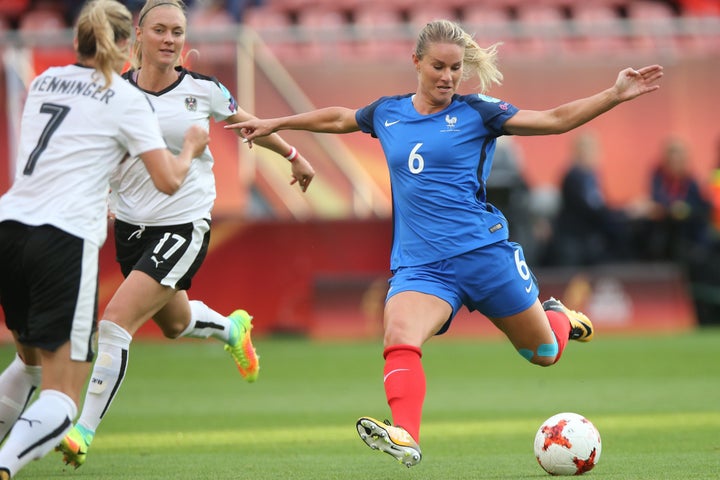
Will we have a new champion? Only four teams have ever won this thing, and the U.S. and Germany have combined to win five of the seven titles. France, England, Canada and Brazil are the highest-ranked teams never to have won the tournament, and all may be good enough to add a name to the winners’ list. Behind them, two other teams could be dark-horse title challengers. Australia topped the U.S., Japan and Brazil to win the 2017 Tournament of Nations, then finished second to Japan in this year’s Asian Cup. The Aussies have yet to reach a semifinal, but NWSL star Sam Kerr gives them the sort of player who could help upset higher-ranked opponents. The Netherlands, meanwhile, reached the knockout stage in its first World Cup appearance in 2015, and the Oranje followed that by winning the 2017 European championship and splitting the 2018 Algarve Cup title with Sweden, which won the silver medal at Rio 2016. Dutch midfielder Lieke Martens is the reigning women’s player of the year.
Will this be the deepest tournament ever? The field of contenders is packed, but it takes only a glance at the qualifying standings to see that the 2019 Women’s World Cup will probably be the deepest tournament in women’s soccer history, thanks to the quality of the teams in the middle. Never before has simply making the final field looked this tough for so many teams. Two sides I praised above as potential winners ― England and Germany ― currently sit in second place in their qualifying groups, with two matches to go, meaning they could still have to face nervy playoff battles to win their way to France. They’re behind 19th-ranked Iceland and 29th-ranked Wales, respectively, two teams that have never played in the Women’s World Cup but offer proof that quality of talent is steadily improving in Europe and elsewhere around the world. The Netherlands, Spain and Switzerland have all continued their ascents since making World Cup debuts in 2015 and may be ready to join teams like Sweden and Norway in the middle tier of women’s soccer. Italy has qualified for the first time since 1999.
Outside Europe, Mexico and Costa Rica (and Raquel Rodriguez) will battle to make second consecutive World Cup appearances, while Colombia ― which reached the knockout stage for the first time four years ago ― will miss out on France after finishing behind Chile and Argentina in final qualifying stages. The 2019 tournament is as wide open as any before it at the top. And qualifying has shown that its middle ranks may be better than ever too.
Can we pay them, already? The strongest legacy of the 2015 World Cup is the debate over fair treatment it spurred around the world. Before the tournament, female players from the U.S. challenged FIFA over the fact that they had to play on artificial turf while the men always play on grass. Afterward, one of the main stories was that the champion U.S. women earned $2 million for winning the World Cup, while the German men received $35 million for winning the 2014 World Cup.
In 2016 the U.S. women’s team filed an equal pay lawsuit, alleging that the U.S. Soccer Federation failed to equally compensate the men’s and women’s teams. After a protracted public and legal fight, the women eventually settled the suit and reached a new collective bargaining agreement with the federation that boosted their pay.
That battle spread to other federations. In Norway, the Netherlands, Australia and elsewhere, women’s teams pushed for more equal treatment in terms of pay and resources to support women’s soccer, which has seen extraordinary growth around the world, just a few decades after women were formally barred from playing the sport in many countries ― England and France included. The 2019 Women’s World Cup promises to be the best and most entertaining version of the tournament ever held. But FIFA will once again pay the champions considerably less than more run-of-the-mill men’s teams, and national federations around the world still don’t devote adequate resources to the women’s game. So it’s a virtual guarantee that there will be even more scrutiny of compensation issues than there was four years ago. And that’s a good thing.
What To Watch Until Then
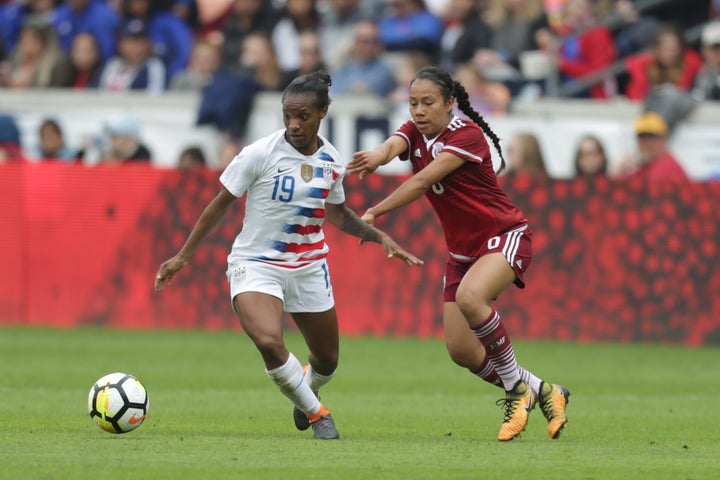
The U.S., Australia, Brazil and Japan will face off in the Tournament of Nations from July 26 to Aug. 2, with matches in Chicago; Kansas City, Kansas; and East Hartford, Connecticut. The U.S. team’s matches will be broadcast live on Fox Sports 1.
The Americans also have dueling friendlies with Chile, which will make its first World Cup appearance next year, in California on Aug. 31 and Sept. 4. Both games are on ESPN2. World Cup qualifying will then take place over the first two weeks of October.
You can also watch many international soccer stars — including ones from the U.S., Brazil, England and France — play in the National Women’s Soccer League, which is in the middle of its sixth season. The full schedule, with TV and streaming info, is here.
CORRECTION: A previous version of this story said the NWSL was in the middle of its fourth season, not its sixth season. It also indicated Tournament of Nations games will be played in Kansas City, Missouri, instead of Kansas City, Kansas.
